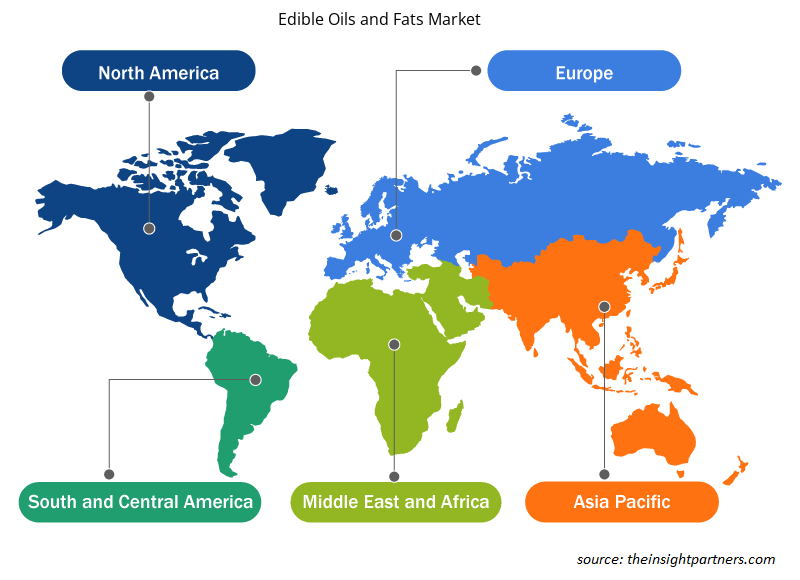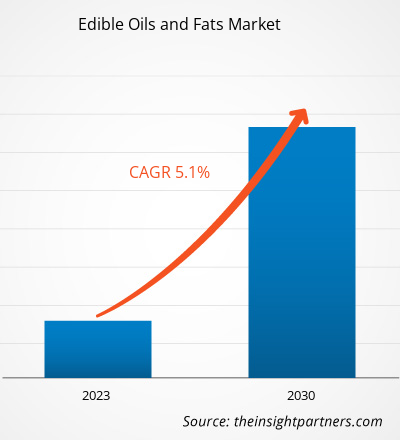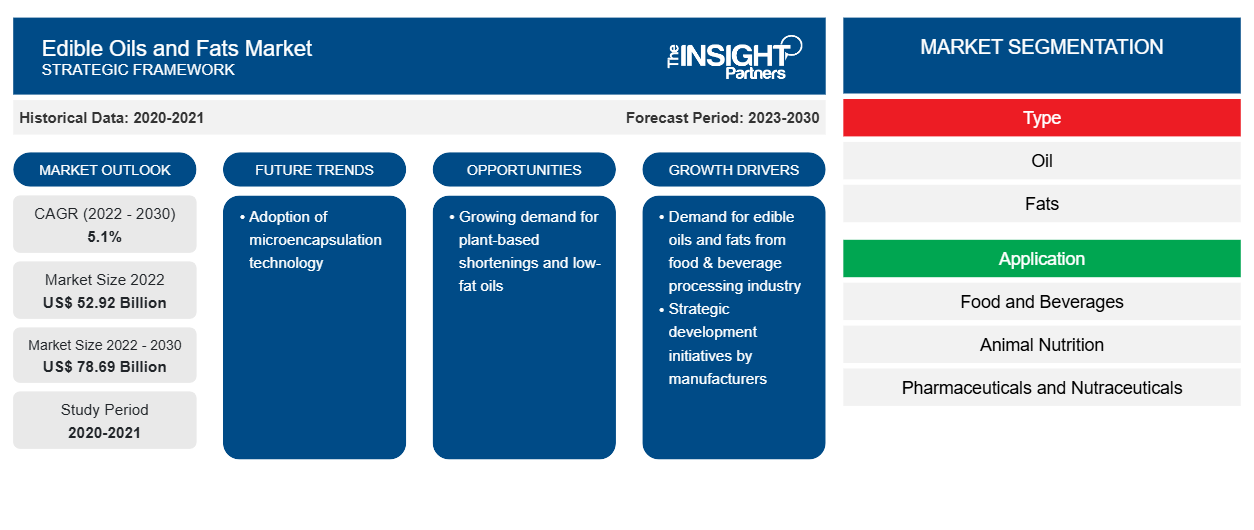[研究报告] 食用油脂市场预计将从 2022 年的 529.2 亿美元增长到 2030 年的 786.8661 亿美元;预计 2023 年至 2030 年的复合年增长率为 5.1%。
市场洞察和分析师观点:
食用脂肪是通过动物源性原料(如猪油和牛脂)或植物源性原料获得的。肉类加工商是食用动物源性脂肪制造商的原材料供应商。制造商与肉类加工行业签订了长期协议,以获得不间断的原材料供应。将猪肉或牛肉的脂肪组织切成小块,在蒸汽蒸煮器中煮沸,脂肪被释放到水中。脂肪漂浮在水面上,通过撇渣收集。将动物组织的膜状物质放入液压机中压制,从而获得额外的脂肪。在除渣离心机中将脂肪从液相中分离出来。
人造黄油等植物油脂是通过对大豆油、玉米油或红花油进行氢化而获得的。首先用漂白土或木炭对油进行漂白,以去除不良气味和颜色。然后将其通过高压氢气,使油凝固以获得人造黄油。制造植物油和脂肪的工艺多种多样。
精炼食用油脂经包装后,通过分销商和供应商送往食品饮料、动物营养、医药和保健品等终端用户。嘉吉公司、邦吉有限公司、ADM、富士制油株式会社和花王株式会社是全球主要的食用油脂制造商。
增长动力和挑战:
根据美国农业部 (USDA) 的数据,大豆油是第二大消费植物油。它广泛用于煎炸、烹饪、起酥油和人造黄油。根据经济合作与发展组织 (OECD) 的数据,2022 年,植物油消费量达到 2.49 亿公吨,其中食品行业占主要份额。此外,糖果行业大量使用黄油作为主要成分,其次是人造黄油。高品质食用油和脂肪用于烘焙和糖果、乳制品和冷冻甜点、零食、即食 (RTE) 和即食 (RTC) 餐以及其他食品和饮料。精炼油和脂肪是脂质的丰富来源。因此,由于应用的增加和全球人口的增长,它们的使用量正在增加。
由于人们对可持续性的倾向日益高涨、对便利和即食产品的偏好以及对有机和植物性产品的采用日益增加,北美和亚太等不同地区的食品和饮料行业正在持续增长。该行业正在见证流程、产品和服务创新的重大进展,以满足快速变化的消费者偏好。根据美国人口普查局的数据,2020 年美国拥有 39,646 家食品和饮料制造厂。其中加利福尼亚州、德克萨斯州和纽约州分别有 6,116 家、2,625 家和 2,600 家。同样,食品和饮料行业是欧洲经济的重要贡献者之一。因此,全球食品和饮料行业的蓬勃发展推动了对食用油脂的需求。
定制此报告以满足您的需求
您可以免费定制任何报告,包括本报告的部分内容、国家级分析、Excel 数据包,以及为初创企业和大学提供优惠和折扣
-
获取此报告的关键市场趋势。这个免费样品将包括数据分析,从市场趋势到估计和预测。
报告细分和范围:
“全球食用油脂市场”按类型、应用和地域进行细分。根据类型,市场分为油脂。根据应用,全球食用油脂分为食品和饮料、动物营养、药品和营养保健品。石油部门在全球占有较大份额
食用油脂市场
2022 年。根据地理位置,食用油脂市场细分为北美(美国、加拿大和墨西哥)、欧洲(德国、法国、意大利、英国、俄罗斯和欧洲其他地区)、亚太地区(澳大利亚、中国、日本、印度、韩国和亚太其他地区)、中东和非洲(南非、沙特阿拉伯、阿联酋和中东和非洲其他地区)以及南美洲和中美洲(巴西、智利和南美洲和中美洲其他地区)。
节段分析:
根据类型,食用油脂市场分为油脂和油。 2022 年,油类部分占据了食用油脂市场的更大份额,预计在预测期内将实现更高的复合年增长率。植物油可以从种子、谷物、坚果和水果中提取。 橄榄油、葵花籽油、棕榈油、菜籽油、椰子油、红花油、玉米油、花生油、棉籽油、棕榈仁油和大豆油是消费最多的油。 通常,植物油用于食品制备,并添加原油以增加风味。 植物油也用于生产动物饲料。 棕榈油易于稳定,可在加工食品中保持风味质量和一致性。 因此,它们经常受到食品制造商的青睐。 印度尼西亚、马来西亚、泰国和尼日利亚是最大的棕榈油生产国和出口国。 人们对氢化植物油中反式脂肪相关的健康问题的认识不断提高,推动了棕榈油在食品工业中的使用。农业食品行业是棕榈油的重要消费者,因为它主要用于工业烘焙食品、巧克力产品、糖果、冰淇淋,甚至减肥餐替代品。棕榈油富含生育酚和类胡萝卜素,可赋予其天然的抗氧化稳定性。因此,棕榈油在各种终端行业中的优势和应用推动了其在世界各地的需求。
区域分析:
食用油脂市场分为五个主要区域——北美、欧洲、亚太地区、南美和中美以及中东和非洲。全球食用油脂市场以南美和中美为主,预计 2022 年将达到约 45,000 亿美元。南美和中美的食用油脂市场分为巴西、阿根廷和南美和中美其他地区。由于消费者对冷冻零食、咸味零食、水果零食、糖果零食和烘焙零食等不同零食选择的偏好日益增加,该地区的零食行业正在扩大。食用油脂起着不可或缺的作用,因为它们为食物提供独特的风味,并在制造零食方面提供独特和理想的功能。例如,油是油炸食品的煎炸介质,在糕点中,添加植物油基起酥油以防止面粉和其他成分结块。因此,对不同零食的需求不断增长以及食用油脂相关的好处推动了南美和中美洲零食行业对食用油脂的需求。
此外,南美洲和中美洲动物营养等终端行业对食用油脂的需求有所增加。据《石油世界》报道,2022 年,中国购买了巴西约 70% 的大豆油,主要用于动物蛋白消费。此外,不断扩大的动物营养、制药和营养保健品行业推动了对专用食用油脂的需求。这些行业需要特定类型的油用于各种应用,例如动物饲料配方和药物配方。随着这些行业的增长和多样化,对其独特需求的需求也在增加,从而推动了南美洲和中美洲食用油脂市场的增长。
行业发展和未来机遇:
全球食用油脂市场主要参与者采取的各种举措如下:
- 2021年10月,美国著名食用油脂制造商之一ADM宣布,计划在北达科他州建设首个专用大豆压榨厂和精炼厂,以满足食品和动物饲料行业对大豆油快速增长的需求。
- 2021年12月,总部位于日本的伊藤忠商事株式会社宣布,通过总部位于美国纽约的伊藤忠国际株式会社,在美国成立不二制油国际有限公司。通过此项协议,该公司计划加强在北美的油脂业务。
食用油脂市场区域洞察
Insight Partners 的分析师已详细解释了预测期内影响食用油脂市场的区域趋势和因素。本节还讨论了北美、欧洲、亚太地区、中东和非洲以及南美和中美洲的食用油脂市场细分和地理位置。

- 获取食用油脂市场的区域特定数据
食用油脂市场报告范围
| 报告属性 | 细节 |
|---|---|
| 2022 年市场规模 | 529.2亿美元 |
| 2030 年的市场规模 | 786.9 亿美元 |
| 全球复合年增长率(2022 - 2030 年) | 5.1% |
| 史料 | 2020-2021 |
| 预测期 | 2023-2030 |
| 涵盖的领域 |
按类型
|
| 覆盖地区和国家 |
北美
|
| 市场领导者和主要公司简介 |
|
市场参与者密度:了解其对商业动态的影响
食用油脂市场正在快速增长,这得益于消费者偏好的不断变化、技术进步以及对产品益处的认识不断提高等因素导致的终端用户需求不断增加。随着需求的增加,企业正在扩大其产品范围,进行创新以满足消费者的需求,并利用新兴趋势,从而进一步推动市场增长。
市场参与者密度是指在特定市场或行业内运营的企业或公司的分布情况。它表明在给定市场空间中,相对于其规模或总市场价值,有多少竞争对手(市场参与者)存在。
在食用油脂市场运营的主要公司有:
- 邦吉公司
- 阿彻丹尼尔斯米德兰公司
- 不二制油株式会社
- 花王公司
- 安克公司
免责声明:上面列出的公司没有按照任何特定顺序排列。

- 获取食用油和脂肪市场顶级关键参与者概述
COVID-19 疫情影响:
COVID-19 疫情影响了各国的经济和行业。北美、欧洲、亚太地区 (APAC)、南美和中美以及中东和非洲 (MEA) 主要国家的封锁、旅行禁令和企业停工对包括食品和饮料行业在内的各行业的增长产生了负面影响。制造部门的关闭扰乱了全球供应链、制造活动、交付计划以及各种必需品和非必需品的销售。多家公司宣布,2020 年产品交付可能会延迟,未来产品销售将出现下滑。此外,欧洲、亚洲和北美各国政府对国际旅行实施的禁令迫使各公司暂时搁置合作和伙伴关系计划。所有这些因素都阻碍了 2020 年和 2021 年初的食品和饮料行业,从而抑制了食用油脂市场的增长。
竞争格局和重点公司:
邦吉有限公司、阿彻丹尼尔斯米德兰公司、富士制油有限公司、花王公司、AAK AB、J-Oil Mills Inc、嘉吉公司、奥兰集团有限公司、ConnOils LLC 和路易达孚公司是全球食用油脂市场的知名企业。这些食用油脂制造商提供具有创新功能的尖端萃取解决方案,为消费者带来卓越的体验。
- 历史分析(2 年)、基准年、预测(7 年)及复合年增长率
- PEST和SWOT分析
- 市场规模、价值/数量 - 全球、区域、国家
- 行业和竞争格局
- Excel 数据集
近期报告
客户评价
购买理由
- 明智的决策
- 了解市场动态
- 竞争分析
- 客户洞察
- 市场预测
- 风险规避
- 战略规划
- 投资论证
- 识别新兴市场
- 优化营销策略
- 提升运营效率
- 顺应监管趋势























 获取免费样品 - 食用油脂市场
获取免费样品 - 食用油脂市场